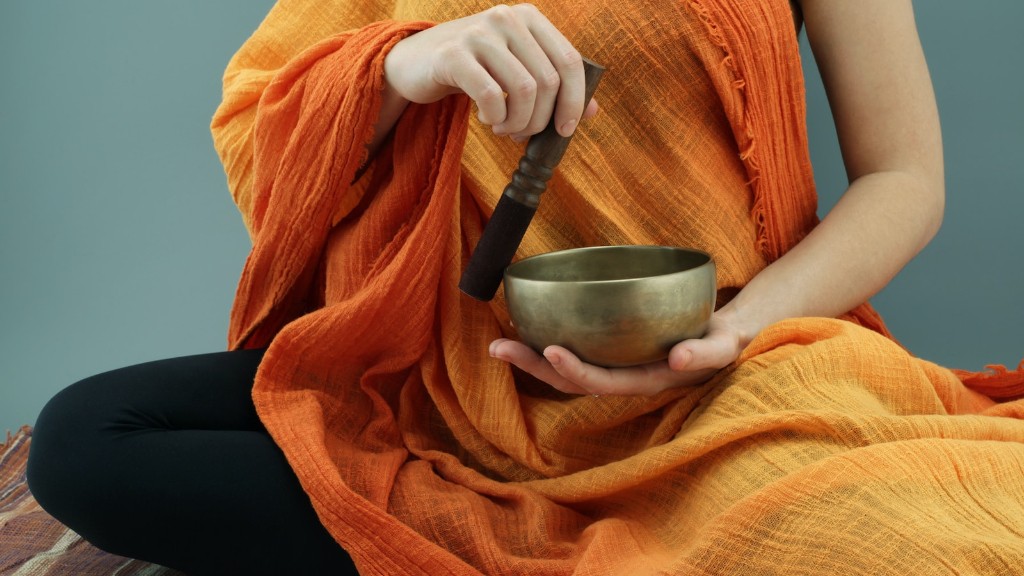Who is the ultimate god in Hinduism? Many people think of Lord Shiva, Vishnu or Brahma as the “ultimate gods” in Hinduism. However, all three are considered manifestations of the one true God, or Brahman, the Existence-Consciousness-Bliss. The Hindu Trimurti, or the “three forms”, combine these three gods into one ultimate deity.
Hinduism is based on a polytheistic system with many gods, but they all have their roots in the one true God or Brahman. All the gods and goddesses of Hinduism are different aspects of Brahman and ultimately serve to fulfill the same purpose: to experience the Divine essence of Brahman. The three gods of the trimurti are interconnected and inseparable, as they all ultimately strive to bring divinity to the universe.
Lord Shiva is the most popular of the three gods of the trimurti and is the deity of destruction and regeneration in Hinduism. He is often depicted as having an ascetic appearance, carrying an axe and wearing a cobra around his neck. His most iconic representation is the lingam, a symbol of creation, destruction and renewal. Shiva symbolizes death and destruction, but is also seen as a creative force as well as the destroyer of ignorance and evil.
Vishnu is the god of preservation, who maintains cosmic order and balance. He is often depicted in a reclining pose, floating on a watery bed with a lotus flower in his hand. Vishnu symbolizes the cyclic nature of existence and his most recognizable form is the four-armed blue deity often sitting on the divine bird, Garuda. Vishnu is seen as a protector and brings stability to the universe.
Brahma is the god of creation, often portrayed with four heads representing the four Vedas, four directions, and the four-faced Brahman. He is depicted holding a water pot in his hand, symbolizing the creative power of Brahman. Brahma is the bringer of new life and creativity, and is seen as the Lord of Wisdom and the originator of songs.
The three gods of the trimurti, Shiva, Vishnu, and Brahma, are inseparable and symbolize the interconnectedness of the physical and spiritual realms in Hinduism. Though all three gods of the Trimurti are important aspects of Hindu faith, it is the one true God, Brahman, that is the ultimate deity in Hinduism.
Brahman – The Source Of All Creation
Brahman is the source of all creation in Hinduism and is considered to be the-one-and-only-God. Brahman is eternal and beyond time and space. It is seen as the ultimate source of knowledge, consciousness, bliss and power and is beyond the physical world. Brahman is known by different names in Hinduism and is believed to be the source of all the gods and goddesses. It is also known as ‘Paramatma’ or the ‘Supreme Soul’.
Brahman is beyond all forms, thoughts, and emotions. It is described as ‘paramathma’ or ‘transcendental soul’, meaning the supreme soul beyond all physical realms of creation. Brahman is said to be formless, intangible and can only be experienced via self-realization. According to the Upanishads, Brahman is the ultimate truth and underlying reality that binds all creation, and is the essence of all life.
Brahman is seen as beyond all human definition and can only be experienced within one’s self. Hindus strive to experience Brahman through inner reflection, meditation, and spiritual practices. The goal of Hinduism is to attain ‘moksha’, or liberation from the physical realm and the cycle of death and rebirth. By connecting with Brahman, Hindus experience a sense of oneness with other creatures, beings and the universe.
Hindu Scriptures Describe Brahman
In Hindu scriptures, Brahman is described as the ‘All-pervading Divinity’, meaning that it is present everywhere in the universe. It is said to be the source and ultimate cause of all creation. Brahman is believed to exist beyond the physical world and be transcendent and eternal. The Upanishads tell us that Brahman is without form, without name and beyond all human definition. Brahman is seen as the source of all other gods and goddesses and is worshipped as the divine source of all creation.
Brahman is often personified as the ‘Trinity Gods’, or the Trimurti, consisting of the Gods Brahma, Vishnu and Shiva. These gods are seen as different aspects of the one-true God, Brahman. Hindus worship the Trimurti as the source of all creation, preservation and destruction. The Trimurti is seen as the manifestation of one supreme God, Brahman.
In Hinduism, Brahman is seen as the ultimate deity that unites all creation and brings order to the universe. All the gods and goddesses of Hinduism originate from Brahman and serve to fulfill the same purpose: to experience the Divine essence of Brahman. By connecting with Brahman, Hindus experience a sense of oneness with the world and the cosmic flow of life.
Interconnected Nature Of The Trimurti
The Trimurti, or the three forms of Brahman, are interconnected and inseparable. Though they are different aspects of Brahman, they work together in harmony to bring divinity to the world. Lord Shiva is the deity of destruction and regeneration, Vishnu is the god of preservation, and Brahma is the god of creation. Each of the gods in the trimurti serves a unique purpose, but all their functions ultimately aim to bring balance and harmony to the universe.
The Trimurti is considered to be the foundation of Hindu belief and is a fundamental principle in Hinduism. Hindus aspire to come to a deeper understanding of the interconnectedness of the Trimurti in order to experience the divine power of Brahman. This is often done through spiritual practices such as meditation, yoga, devotion and surrender. Connecting to the Trimurti brings the knowledge of the interconnectedness of the physical and spiritual realms and leads one to a more profound understanding of the divine power of Brahman.
Role Of The Trimurti In Hindu Rituals
The Trimurti is integral to Hindu rituals, festivals and spiritual gatherings. Worshippers often invoke the Trimurti to aid in the process of spiritual liberation. The Trimurti is invoked to bring divine energy and power to the spiritual activities being performed. Hindus also seek to be guided by the Trimurti when they are undertaking difficult tasks or making important decisions.
The Trimurti is often invoked during important festivals in Hinduism. During festivals such as Navaratri, Diwali and Holi, devotees celebrate the cosmic unity of creation, preservation and destruction embodied by the Trimurti. The gods are honored and praised for their roles in maintaining balance and harmony in the universe.
In Hindu scriptures, the Trimurti is described as a manifestation of the one-true-God, Brahman. All the gods of Hinduism are interconnected and their powers are derived from Brahman, the ultimate God in Hinduism. The Trimurti serves as a reminder that all of creation, seen and unseen, is interconnected and is rooted in the power of the one true God.
Devotion To The Trimurti
Hindus practice devotional worship of the Trimurti as a way of connecting to Brahman, the one true God. Devotees often make offerings of flowers, incense and food to the gods as an act of gratitude and reverence. The daily rituals of puja and homa are also used to honor the Trimurti and seek their guidance in times of difficulty or turmoil.
Devotees also turn to the Trimurti to aid in the process of spiritual liberation. Hindus believe that through devotion to the Trimurti, they can become liberated from the physical world and experience the divine power of Brahman. The Trimurti serves as a reminder that all of creation is interconnected and ultimately leads to the one-true-God, re-igniting a sense of purpose and oneness in the devotee.
Concept Of Avataras In Hinduism
An important part of Hinduism is the concept of avatars, or human manifestations of the gods. Through avatars, the divine powers of the Trimurti are made manifest in the physical realm. The most famous avatar of Vishnu is the blue-skinned god, Krishna, who is said to have descended from the heavens to preserve Dharma and the righteousness of humanity.
Avatars of Shiva are also worshipped in Hinduism, such as Hanuman, Bhairava and Nataraja. Avatars of Brahma are rarely worshipped in Hinduism, yet he is still seen as a powerful being capable of creating the universe. Hindus believe that through the worship of avatars, they can experience the divinity of the Trimurti and gain a deeper understanding of their interconnectedness to the one-true God.
Avatars serve to demonstrate the power of the Trimurti and help Hindus to come to a deeper understanding of the interconnectedness between the spiritual and physical realms. Avatars provide an opportunity for devotees to experience the divine power of the Trimurti in a more tangible way, while still being rooted in the one-true-God, Brahman.
Conclusion
Who is the ultimate god in Hinduism? The Trimurti, or the “three forms”, of Brahman – Shiva, Vishnu, and Brahma – combined, ultimately strive to bring divine power to the universe. All the gods and goddesses of Hinduism serve to fulfill the same purpose: to experience the divine essence of Brahman. Brahman, the one true God, is the source of all creation and Hindus strive to connect with this divine power in order to experience a sense of oneness with the world. Avatars of the gods provide a tangible representation of the Trimurti and serve to demonstrate the power of the one-true-God. Through devotion to the Trimurti, Hindus aspire to be liberated from the physical realm and experience the ultimate power of Brahman.

